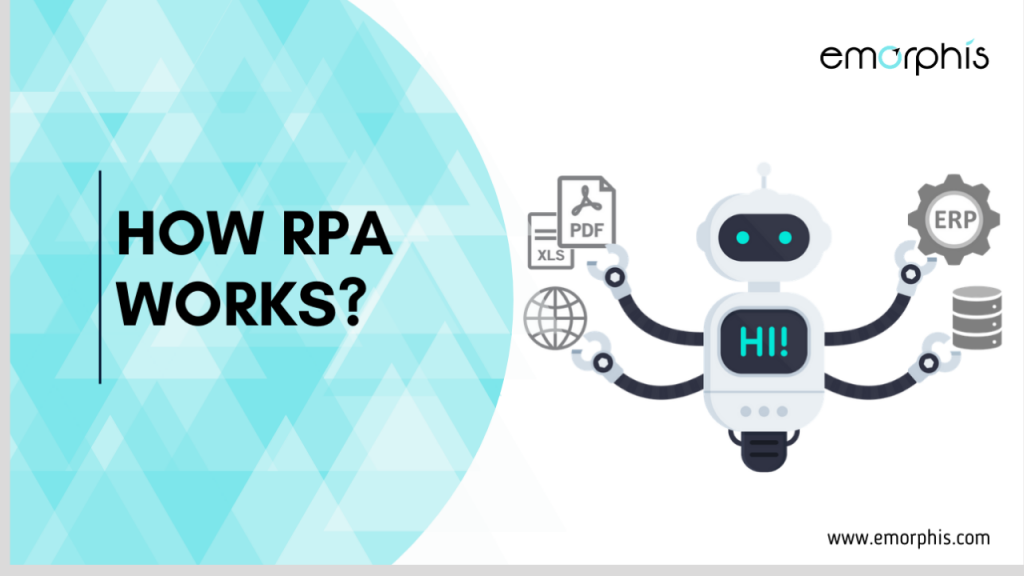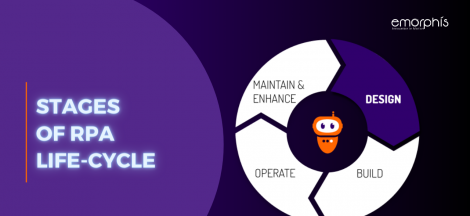Introduction
In today’s era, business mantra for most of the people is-“Do more with less.” But how to do it in the right circumstances, no one knows! However, Robotic Process Automation (RPA) has emerged as a great piece of a software tool that tends to convert the given mantra into reality.
It is the biggest USP of RPA software, and although it might look complicated, it comes with a bundle of benefits. Why? It is because now with the arrival of automation tools, handling of repetitive computer-based tasks has become somewhat easy.
Furthermore, procedures that have been a perfect fit for an enterprise RPA shorten the human hours to minimal and thus bring out efficiency among the employees to showcase their creativity through their innovative skills in other work.
Thus, in the given article, the major talking will be about explaining the concept of RPA to the readers appropriately. Moreover, it will also include a detailed analysis of the working pattern of the given automation technology.
What is Robotic Process Automation?
First of all, it is important to understand the concept of Robotic Process Automation. It is a newly and currently most accepted business process automation technology which permits anyone to configure to software called ‘bot’. It is the perfect software with the capability to emulate the action of the human via digital systems to execute the business procedures in the best possible way.
RPA captures data by triggering responses, running numerous applications, and communicating with various other systems to perform an ample number of tasks within a short period. With its help, business professionals can easily configure the repetitive daily routine operating between multiple systems with great ease. In this way, it assists in filling the automaton gaps which enhances the business performance.
With the help of these bots, RPA can work in synchronization with application user interfaces and seamlessly mimics the working of humans such as logging in/out, copy/paste data, opening mails, and filing various forms.
Although it might sound a familiar tone for the customers with the most similarity to macros and screen-scraping technology, yet it has evolved to create a picture-perfect solution. RPA service providers are now in great demand because they simplify the users’ work by automating the task of working under multiple applications at once.
When compared to the previously available automation solutions, the RPA solution is leading from the front because due to its dynamic nature, it has become an important tool to drive the future business into the fold of the digital transformation solution.
Present ongoing COVID-19 pandemic has cast a shadow on the working pattern of most businesses that are seeking help from the automation sector. In such a scenario, robotic process automation software has created a ruckus by performing the task with reduced spending and thus offering firms a competitive edge.
So, from startups to big enterprises, RPA has proved its worth due to its high flexibility and great versatility and is going to run the future in the given time of the pandemic.
In the next section, the focus will be on the working pattern of RPA and the way it achieves its results most proactively.
How do RPA works?
With the revelation of the concept of RPA, it is prudent for one to ask about the working pattern of the given automation tool. However, most of the people want to know the actual working of the given RPA software.
Some basic principles demonstrate the working of the RPA software and also signify that starting with RPA is very easy. Furthermore, RPA is maturing with each passage of time, and with the arrival of new technologies such as AI and ML, it has working to offer new possibilities for the developers.
So, bots present in RPA software tools have the capability to mimics most of the human user actions. It leverages the ‘drag-and-drop’ feature in the user interface which helps in incorporating automation in the given system well.
Many tasks can be easily accomplished by the RPA solution. It includes:
Ø Log into any application without requirement of asking username and password from the respected person
Ø Swift connection to system APIs for better performance
Ø Copying and pasting of a large amount of data without any error
Ø Movement of files and folders from one system to other simultaneously
Ø Extracting and processing of the structured and semi-structured content which have been obtained from emails, PDFs, forms and documents
Ø Reading and writing these structured into the database
Ø Reading and processing information from multiple systems
Ø Opening up of email and other attachments without taking consent from the employees
Ø Scrapping up of essential data from the web and make calculations
So, it could be well-said that the fundamental difference between other automation tools and RPA software tool is due to the presence of the set of trained bots which deliver best results more profitably than obtained from a manual set of rules and conditions.
What’s more, RPA software needs no attention from coders as it follows the trend of no-code to low code that implies little or no requirement of altering the original coding and staying it as it is. What is the idea behind it?
The idea is to enable even a non-programmer (including business analyst and outside of IT) with little knowledge of coding to create software that can handle repetitive (and boring) computer tasks with great ease.
After understanding the working procedure of the given automation system, it is sensible to know about the time were RPA can have applications in the most proactive manner. So, the next section focuses on the given phase.
When to Use RPA
Various tedious tasks may prove to be boring for human force but have been a perfect match for RPA such as feeding information to multiple systems, application handling, and various data-intensive work that needs services of specialists.
There are two ways through which maximum utilization of the RPA software can be achieved. These are:
Ø First is the implementation of bots to postpone IT investment that is the case of legacy IT systems. As multiple systems have poor integration for all the long time, RPA can come as handy in replacing the labor-intensive work by reducing the consumption of time in the best possible way
Ø RPA offers an inexpensive and fast solution to the same issue prevalent in an IT industry for a longer duration. It is because the implementation of RPA technology is easy and there is no need to change the existing system. In this way, there is saving of operational and maintenance cost which is badly needed by any IT firm
Wrapping Up
Thus from the given article, one thing is clear that unlike other automation tools, RPA has higher intelligence in deciding which process can occur and at which place. Moreover, it analyzes the decision perfectly and take a decision based on the logic parameters without undergoing system integration.
RPA is easy to work with and has high flexibility as it implementing it in any business is easier than one thought about the given automation platform. So, for the sake of your client, you have to go the extra mile. Take the services of one of the best RPA consultants and achieve the best automation results for your business especially in the turbulent times due to COVID-19.







